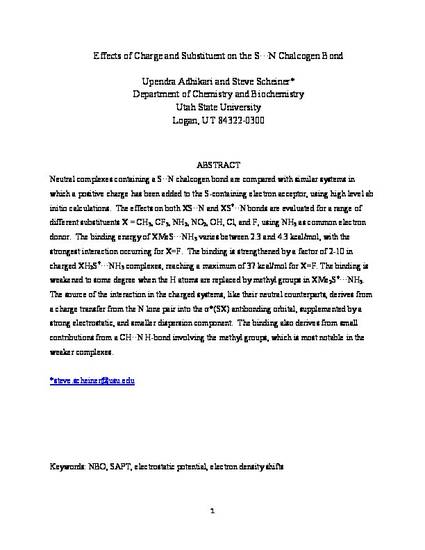
Neutral complexes containing a S···N chalcogen bond are compared with similar systems in which a positive charge has been added to the S-containing electron acceptor, using high-level ab initio calculations. The effects on both XS···N and XS+···N bonds are evaluated for a range of different substituents X = CH3, CF3, NH2, NO2, OH, Cl, and F, using NH3 as the common electron donor. The binding energy of XMeS···NH3 varies between 2.3 and 4.3 kcal/mol, with the strongest interaction occurring for X = F. The binding is strengthened by a factor of 2–10 in charged XH2S+···NH3 complexes, reaching a maximum of 37 kcal/mol for X = F. The binding is weakened to some degree when the H atoms are replaced by methyl groups in XMe2S+···NH3. The source of the interaction in the charged systems, like their neutral counterparts, is derived from a charge transfer from the N lone pair into the σ*(SX) antibonding orbital, supplemented by a strong electrostatic and smaller dispersion component. The binding is also derived from small contributions from a CH···N H-bond involving the methyl groups, which is most notable in the weaker complexes.
